The Rice Story: Beyond White Rice
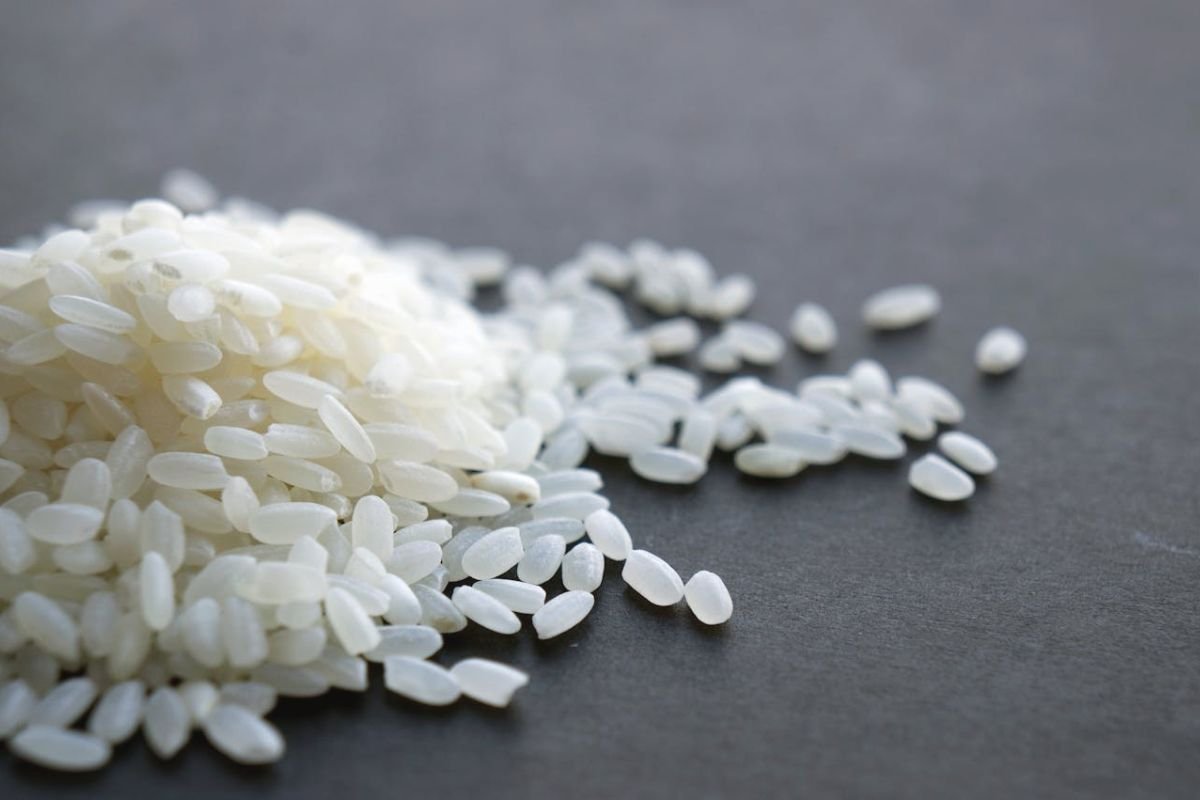
14 OCTOBER 2025
The Power of Rice
Let’s talk about a plant that doesn’t just feed the world, it tells the story of a continent.
Today, we’re diving into the subtle strength of rice, the grain that has nourished Asia for thousands of years and shaped the lives of billions.
If wheat were a person, you might call it extroverted. It emerged from the Fertile Crescent and marched confidently across Europe, Central Asia, and into the Americas. Today, wheat claims the title of the most widely cultivated crop on Earth.
But rice?
Rice is different.
It’s quieter. More reserved. Rooted.
Even though global rice production has caught up to, and sometimes surpassed wheat, it hasn’t spread in quite the same way. More than 90% of the world’s rice is still grown in Asia, and it remains deeply tied to the region’s landscapes, traditions, and dinner tables.
That’s why many see rice not just as food, but as a cultural symbol of Asia itself.
A Daily Ritual for Half the World
Asia is home to about 60% of the global population, and in most of these countries, rice is life. It’s the base of steaming bowls in Thailand, sticky servings in Laos, and the fragrant heart of every biryani in India.
And rice’s reach doesn’t stop there.
From Africa to Latin America, large populations depend on rice as a daily staple. All in all, about half the world’s population eats rice every day.
So when we talk about feeding the world, it’s not an exaggeration to say rice may be even more vital than wheat.
Where Did It All Begin?
Rice is undoubtedly Asian in origin, but pinning down its exact birthplace sparks some passionate debate.
The most widely accepted theory places rice’s first domestication in the Yangtze River basin of China, around 9,000 years ago. But India presents a compelling counterpoint, especially when it comes to indica rice, which is genetically distinct from japonica.
Some scientists even propose that rice was domesticated independently in both China and India, a tantalising possibility that makes the story even richer.
And then there’s Korea, where archaeological evidence suggests rice cultivation dating back thousands of years. While some of these claims stretch the timeline, they highlight just how deeply rice is woven into the national narratives of Asia.
More Than One Kind of Rice
Rice isn’t just one thing, it’s a world of varieties.
You’ve probably heard of japonica, indica, glutinous rice, or even germ rice. These aren’t just trendy labels. They reflect real differences in genetics, geography, texture, and taste.
If we want to truly understand why rice matters, we need to look beyond the grain on our plate and explore the story behind it.
Because rice isn’t just a crop.
It’s civilisation, it’s survival, and it’s the quiet grain that feeds billions.
Japonica, Indica, and the Wild Origins of Rice
If you’ve ever wondered why rice can look and taste so different from one dish to the next, the answer starts with two key varieties: japonica and indica.
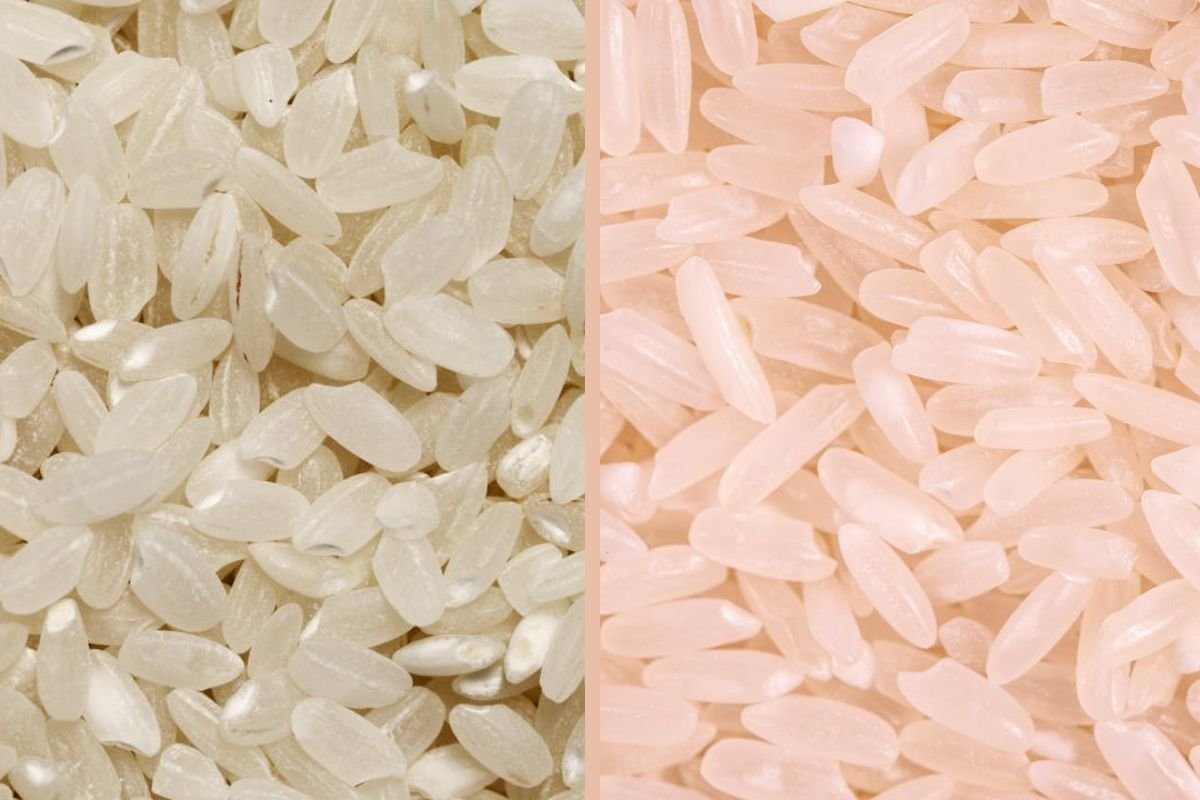
Sticky or Fluffy? That’s the Rice Talking
Short and plump grains, like those found in sushi or Korean meals, are typically japonica rice. This variety thrives in cooler climates, like Japan, Korea, and northeastern China, and when cooked, it turns soft and sticky. It’s the kind of rice that holds together nicely, which is why it’s perfect for chopsticks or rice balls.
On the flip side, long and slender grains come from indica rice, which grows best in hot, humid regions such as India, Thailand, and southern China. It cooks up light and fluffy, ideal for dishes like biryani or jasmine-scented stir-fry, where you want each grain to stay separate and distinct.
Meet the Sticky Cousin: Glutinous Rice
Then there’s glutinous rice, also known as sticky rice or sweet rice. Don’t let the name fool you, it doesn’t contain gluten. What it does have is very little amylose and a lot of amylopectin, which gives it that chewy, sticky texture. This is the rice behind traditional Asian treats like tangyuan (sweet rice balls), zongzi (leaf-wrapped dumplings), and niangao (rice cake). But for everyday meals? Most people stick with non-glutinous indica or japonica.
Same Species, Different Styles
Whether you’re eating sushi in Tokyo or curry rice in Bangkok, you’re most likely enjoying a variety of Oryza sativa, or Asian rice. Japonica and indica are simply two subspecies within this group: Oryza sativa subsp. japonica and Oryza sativa subsp. Indica.
But Asian rice isn’t the only rice humans have cultivated.
Africa’s Ancient Grain
There’s a lesser-known cousin called Oryza glaberrima, or African rice. Domesticated in West Africa about 3,000 years ago, it comes from a completely different genetic line. Its wild ancestor split off from the Asian rice lineage over half a million years ago. Despite its historical significance, African rice never quite caught on globally. It yields less, struggles with environmental stress, and is harder to harvest. That’s why when Asian rice reached Africa, it eventually took over, and today, only about 20% of West Africa’s rice is still the native kind.
Going Wild: The Ancestor of All Asian Rice
The story of domesticated rice takes us back to Oryza rufipogon, also called wild red rice or ghost rice. It still grows wild across parts of China, India, and Southeast Asia. One fascinating feature? Its grain heads shatter easily when ripe, allowing seeds to scatter and replant naturally. That’s great for survival in the wild, but a headache for farmers trying to harvest a stable crop.
One of the major breakthroughs in early agriculture was selecting rice plants that didn’t shatter, where the grains stayed on the stalk until harvested. This single change marked a big leap toward reliable food production.
It’s a pattern we’ve seen with other crops, too. Wheat and corn went through similar changes. Human hands slowly began shaping nature to suit survival, and dinner tables.
Next, we’ll follow that transformation even more closely: how rice evolved from a humble wild grass into a global staple that keeps half the world fed.
The China–India Rice Origin Debate
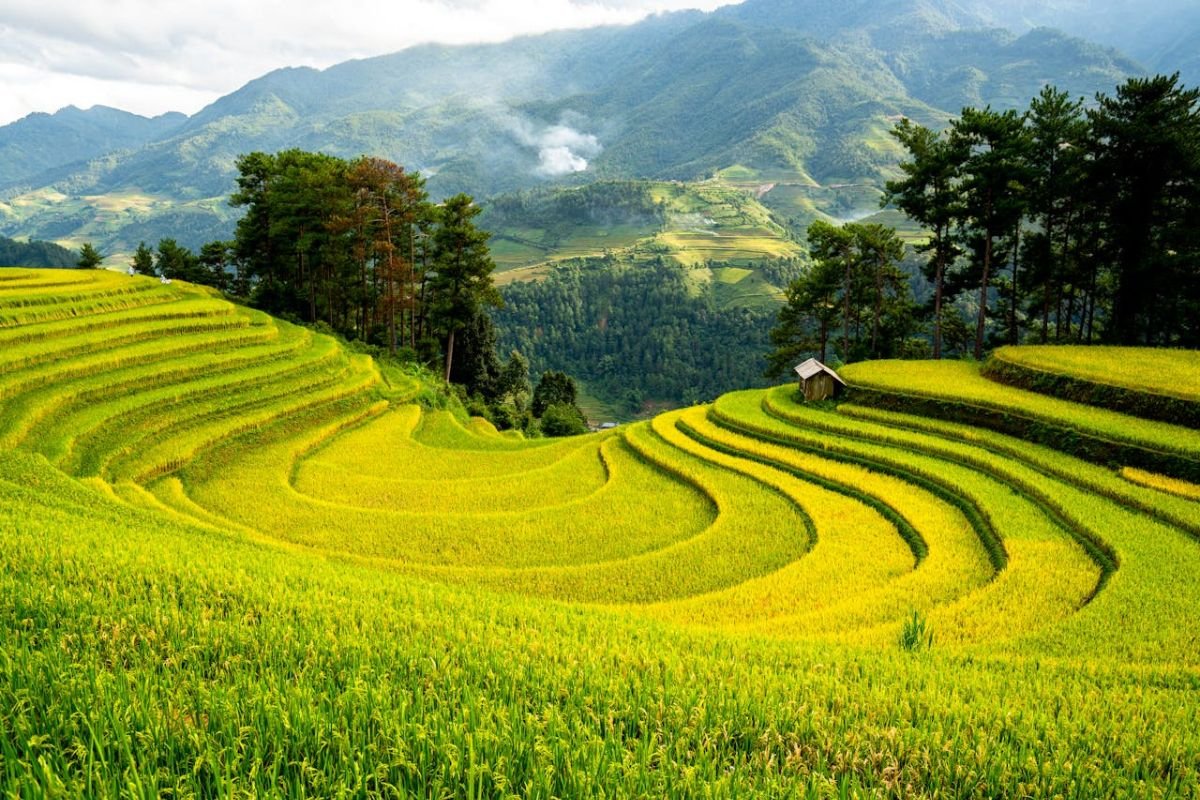
Where exactly did rice first become a crop? It’s one of the biggest, and most debated questions in agricultural history.
Let’s start with what we know. In China’s Yangtze River basin, archaeologists have uncovered evidence of rice use dating back 9,000 to 10,000 years. Sites like Yuchanyan in Hunan have revealed charred rice remains, suggesting early humans weren’t just gathering wild rice, they were beginning to farm it. By around 7,000 years ago, places like the Hemudu site show signs of organised rice cultivation. Rice farming, at that point, was no longer just an experiment, it was becoming a way of life.
Across the Yangtze region, researchers have found everything from ancient rice grains and pottery with husk impressions to primitive farming tools. This body of evidence has led many experts to consider China the birthplace of domesticated rice.
But the story doesn’t end there.
India and Korea have made their own claims. In India, researchers at sites like Lahuradewa (Uttar Pradesh) suggest that rice may have been cultivated as far back as 13,000 to 15,000 years ago. These findings rely on microfossils called phytoliths and grain imprints, but they’re still debated, partly because they haven’t been consistently verified across multiple layers or supported by strong genetic data. Korea, meanwhile, has rice remains dating back around 5,000 years, likely after rice had already spread from China.
So how do we cut through the noise and figure out where rice really started?
That’s where DNA comes in.
In 2011, a major genetic study “Molecular evidence for a single evolutionary origin of domesticated rice” looked at 59 samples of cultivated and wild rice from China, India, and Southeast Asia. The researchers were hunting for domestication genes: genetic markers tied to traits like grain size, seed retention, and plant structure.
Here’s the big reveal: both japonica and indica rice varieties shared the same key domestication genes.
Why does that matter?
Because if indica rice had been domesticated independently in India, its genes would look very different from those of japonica. Instead, the data suggests that japonica rice was domesticated first in China. Over thousands of years, it spread south and west. When it reached India, it interbred with a local wild species called Oryza nivara, giving rise to indica rice. In other words, indica didn’t start from scratch, it inherited its domesticated genes from japonica.
Using something called molecular clock analysis, the researchers estimated that rice was domesticated between 8,200 and 13,500 years ago, matching archaeological timelines from the Yangtze basin. Indica, as a hybrid, emerged later, around 4,000 years ago.
Once domesticated, rice spread quickly across Asia. It moved north to Korea and Japan, south to Southeast Asia and India, and east to the Pacific Islands thanks to Austronesian voyagers. But it didn’t thrive everywhere.
In northern and northwestern China, especially the Yellow River region, rice never became the staple. The reason? Water. Rice needs a lot of it. In these drier climates, people stuck with millet and, later, wheat. Grains better suited to the landscape.
So if we really want to understand why rice spread where it did, we have to look deeper, not just at where it came from, but at the plant itself.
That’s exactly where we’re headed next.
The “Superpower” of Rice
What Is Upland Rice?
You’ve probably heard of upland rice, sometimes called dry rice, but what exactly is it? It’s not a different species or some exotic hybrid. Upland rice is just a type of Oryza sativa, the same species as traditional rice. The difference lies in where and how it grows.
Unlike paddy rice, which thrives in flooded fields, upland rice grows in drier, rainfed areas, often on sloped or uneven terrain. It’s more drought-tolerant and doesn’t need standing water, making it a better fit for places with limited irrigation.
Why Rice Can Breathe Underwater
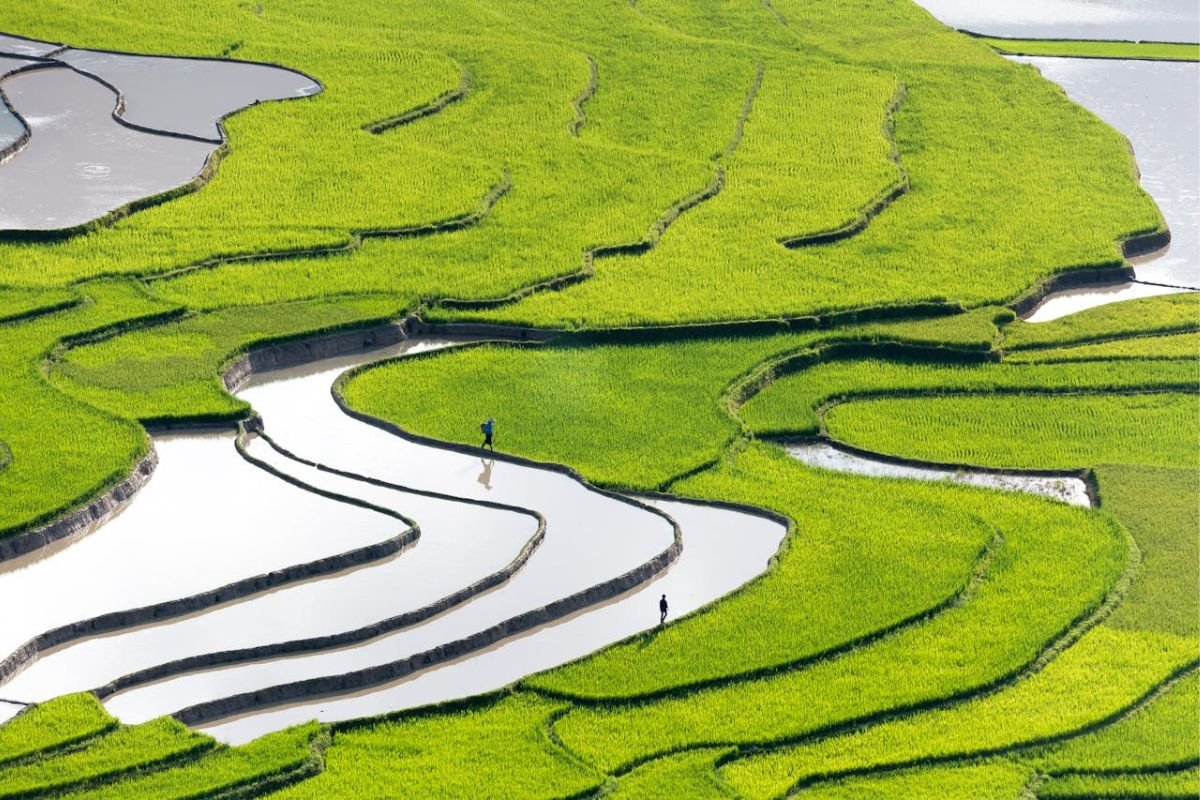
Across the globe, most rice is still grown the traditional way: in flooded paddies. And this is where rice reveals its “superpower.”
Most major crops, like wheat, corn, or soybeans, can’t handle flooded soils. Their roots suffocate without oxygen. But rice? Rice is different. It’s the only staple crop that can thrive in standing water.
How? Rice has a built-in snorkel system. It forms tiny air channels called aerenchyma inside its stems and leaves, which carry oxygen from the air down to the roots. As long as the leaves stay above water, rice keeps breathing, even in soggy conditions.
Some varieties take it even further. Deepwater rice, for example, grows fast, really fast. As floodwaters rise, these plants stretch upward, sometimes growing several meters in just days, lifting their leaves above the surface like little green periscopes.
The Benefits of Flooded Fields
This flooding ability isn’t just cool, it’s practical. Flooded rice paddies offer several key farming advantages:
- Weed control: Most weeds can’t survive underwater, so farmers use fewer herbicides.
- Pest reduction: Many pests also struggle in flooded conditions, lowering the need for chemical control.
- Soil health: Waterlogged soils encourage certain microbes, like Azospirillum bacteria, which can help fix nitrogen, cutting down on the need for synthetic fertilisers.
The Trade-Offs: Water and Methane
But these perks come with some downsides.
Flooded rice fields require flat land, careful water management, and a lot of water. In fact, rice consumes more than one-third of the world’s irrigation water, despite being grown on only about 11% of cultivated land.
Is that a problem? It depends. In regions like Southeast Asia, parts of China, and India, where monsoon rains or high groundwater are plentiful, rice paddies don’t always compete with drinking or industrial water supplies. So while rice is water-intensive, it’s often well-matched to its environment.
However, one major concern is methane.
Flooded fields create oxygen-poor conditions ideal not only for nitrogen-fixing microbes but also for methane-producing archaea. These microbes break down organic matter and release methane, a greenhouse gas that’s around 25 times more potent than carbon dioxide over a century.
By some estimates, rice farming is responsible for 10–12% of methane emissions from human activities. That’s on par with emissions from the cattle industry, another cornerstone of global food production.
A Work in Progress
Despite the emissions, rice remains essential. It feeds over half the world’s population and supports millions of farmers. That’s why scientists are developing more sustainable approaches, like:
- Alternate Wetting and Drying (AWD) irrigation
- Improved composting techniques
- Low-methane rice varieties
Rice is far from wasteful, it’s resourceful. Its ability to adapt, thrive, and evolve makes it one of the most remarkable crops in human history. If rice has a “superpower,” it’s not just surviving floods, it’s helping humanity survive, too.
Germ Rice: A Nutritious Upgrade or Overhyped Trend?
If you’ve ever Googled global rice production, you might have run into a curious inconsistency. Some sources claim the world produces about 800 million tons of rice annually, while others say it’s closer to 535 million tons. Strangely enough, both numbers often come from the same place: the UN Food and Agriculture Organization (FAO).
So, what gives?
It all comes down to how rice is measured. That larger figure, 800 million tons, refers to paddy rice, which includes the inedible outer husk. Think of it as rice in its raw, straight-from-the-field form. But we can’t eat rice with the husk on. It needs to be milled, which reduces the weight significantly and brings us closer to that 535 million figure, the edible yield.
Brown, White, and the New Kid on the Shelf
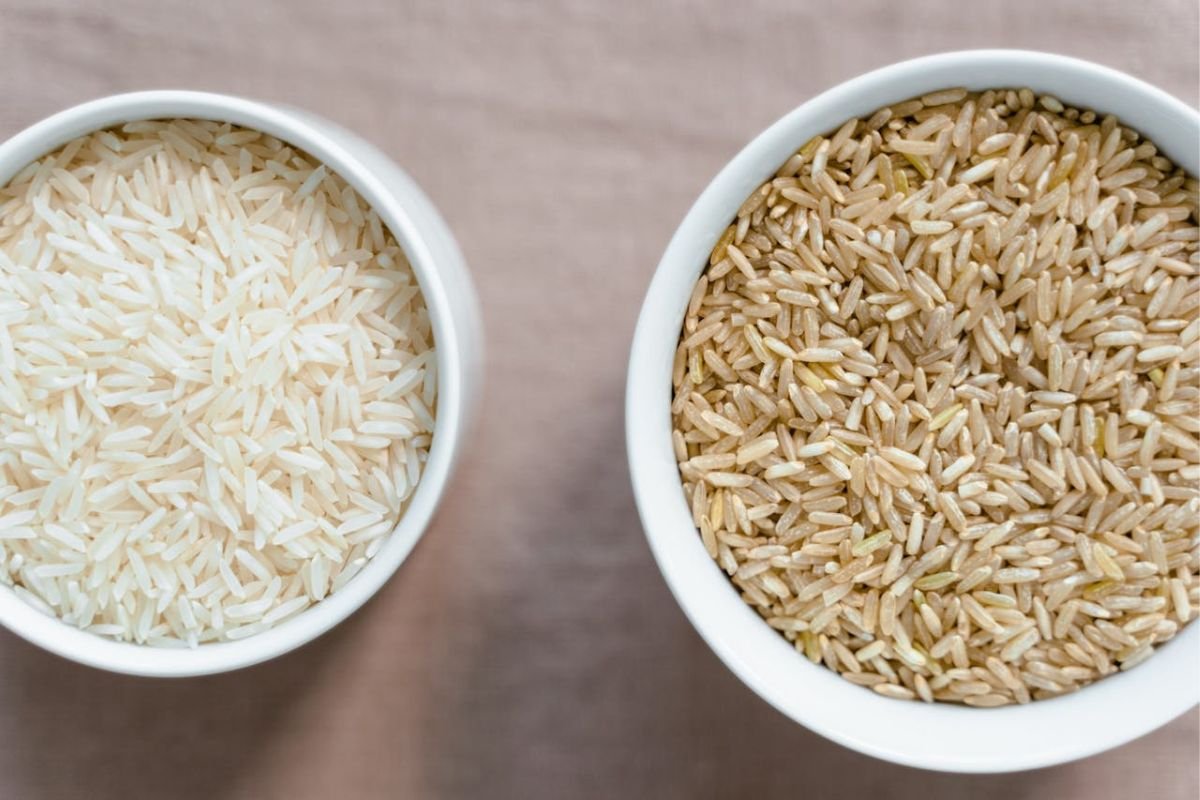
Once the husk is removed, what’s left is brown rice, the rice kernel with its nutritious bran and germ layers intact. It’s fiber-rich, vitamin-packed, and loaded with healthy fats. But brown rice also takes longer to cook, has a chewier texture, and doesn’t store as well. The natural oils in the germ can spoil within a few months.
To make it more convenient, most brown rice is polished, stripping away the bran and germ and leaving just the soft, starchy white rice. It’s fluffy, fast, and shelf-stable, but much of the nutrition is lost in the process.
Enter: germ rice.
This lightly polished rice retains the germ while removing most of the bran. That means you still get a big portion of the nutrients, B vitamins, vitamin E, minerals, and essential fatty acids, with a texture and cook time closer to white rice. It’s the best of both worlds… in theory.
So, Is Germ Rice Worth It?
Nutritionally? Yes. Germ rice offers more than white rice and is a great compromise for those who find brown rice too dense or inconvenient.
But is it worth the price tag?
That’s trickier. Germ rice can cost two to three times as much as regular rice. Why? It needs to be made from premium brown rice, not all varieties work, and its short shelf life (just 2–3 months) makes it harder to store and distribute. Supply stays low, so prices stay high.
Despite a growing interest in healthier staples, germ rice remains a niche product.
The Bottom Line
If you like germ rice and it fits your taste, budget, and cooking habits, go for it. But don’t feel pressured. If you’re already eating a balanced diet with fruits, veggies, legumes, and protein, you’re likely getting everything germ rice provides, and more.
Rice, at its core, is here to fuel the world. Whether you eat it white, brown, germ, or sticky, it remains one of the most reliable and adaptable foods on Earth.
Nutrient upgrades are nice, but calories, affordability, and accessibility are what truly make rice essential.
Final Thoughts: Rice, Resilience, and Feeding the World
Rice is more than a side dish, it’s a symbol of resilience. It can grow on mountains, thrive underwater, and adapt to climates where little else survives. It’s been feeding humanity for thousands of years and continues to evolve alongside us.
Whether you’re curious about how rice is processed, interested in rice nutrition, or simply wondering what kind of rice is healthiest, one thing is clear:
Rice is here to stay. And with smarter, more sustainable practices, and a little nutritional mindfulness, it can stay on our plates and in our fields for generations to come.



